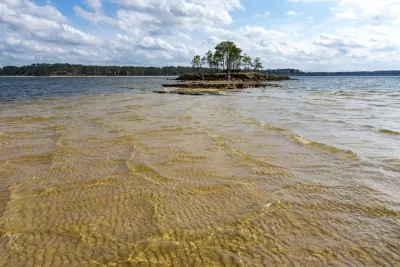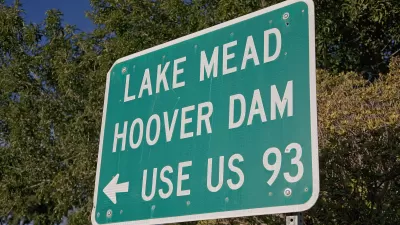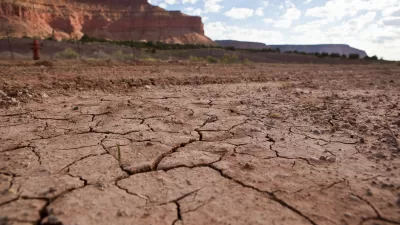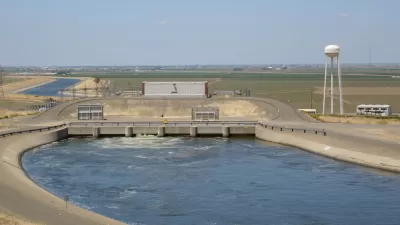The state’s long-term water plan fails to account for the impacts of climate change on water supplies, setting Texas up for a severe water shortage in the coming decades.

Texas officials are ignoring a growing water crisis, warns Erin Douglas in the Texas Tribune, writing that state politicians and agency officials fail to take into account the intensifying effects of climate change. “By late October, water storage in Texas reservoirs had fallen to 67% of capacity, down from 80% a year earlier, according to state data,” Douglas writes.
“Surface water — mainly rivers and reservoirs — accounts for roughly half of Texas’ existing water supply, and is becoming less and less reliable for the state’s fast-growing population as the effects of climate change intensify, experts say.” Yet additional surface water storage is the main tool in Texas’ long-term water plan. “And the Texas Water Development Board, the state agency charged with managing the state’s future water supplies, does not attempt to account for the effects of climate change in its long-term planning,” relying instead solely on data about past droughts.
While state leaders have supported efforts to shore up coastal infrastructure in anticipation of more violent storm surges, “they’ve resisted federal efforts to reduce greenhouse gas emissions that cause climate change — arguing that such efforts would hurt oil and gas jobs in Texas” and have consistently avoided using the term ‘climate change.’
As Dougles explains, “By 2070, demand for water in Texas is expected to increase 9% to 19.2 million acre-feet during a severe drought, up from 17.7 million acre-feet in 2020.” During the same time, the water supply is expected to drop by 18 percent.
See the source article for profiles of several Texas residents affected by water politics and a history of the fight over a new reservoir in the Rio Grande Valley.
FULL STORY: Texas’ plan to provide water for a growing population virtually ignores climate change

Trump Administration Could Effectively End Housing Voucher Program
Federal officials are eyeing major cuts to the Section 8 program that helps millions of low-income households pay rent.

Planetizen Federal Action Tracker
A weekly monitor of how Trump’s orders and actions are impacting planners and planning in America.

Ken Jennings Launches Transit Web Series
The Jeopardy champ wants you to ride public transit.

USDOT Waters Down Self-Driving Car Regulations
The agency is reducing reporting requirements for autonomous vehicles and cars with self-driving features, prompting concern among safety advocates who say transparency is essential to the safe deployment of AV technology.

‘Minnesota Nice’ Isn’t so Nice When You Can’t Find a Place to Live
The Economic Development and Housing Challenge Program can help address the scourge of homelessness among Indigenous people.

NYC Open Streets Organizers Call for City Support
The number of open streets projects has dropped year after year as volunteer groups struggle to fund and staff them.
Urban Design for Planners 1: Software Tools
This six-course series explores essential urban design concepts using open source software and equips planners with the tools they need to participate fully in the urban design process.
Planning for Universal Design
Learn the tools for implementing Universal Design in planning regulations.
Heyer Gruel & Associates PA
Ada County Highway District
Institute for Housing and Urban Development Studies (IHS)
City of Grandview
Harvard GSD Executive Education
Toledo-Lucas County Plan Commissions
Salt Lake City
NYU Wagner Graduate School of Public Service





























